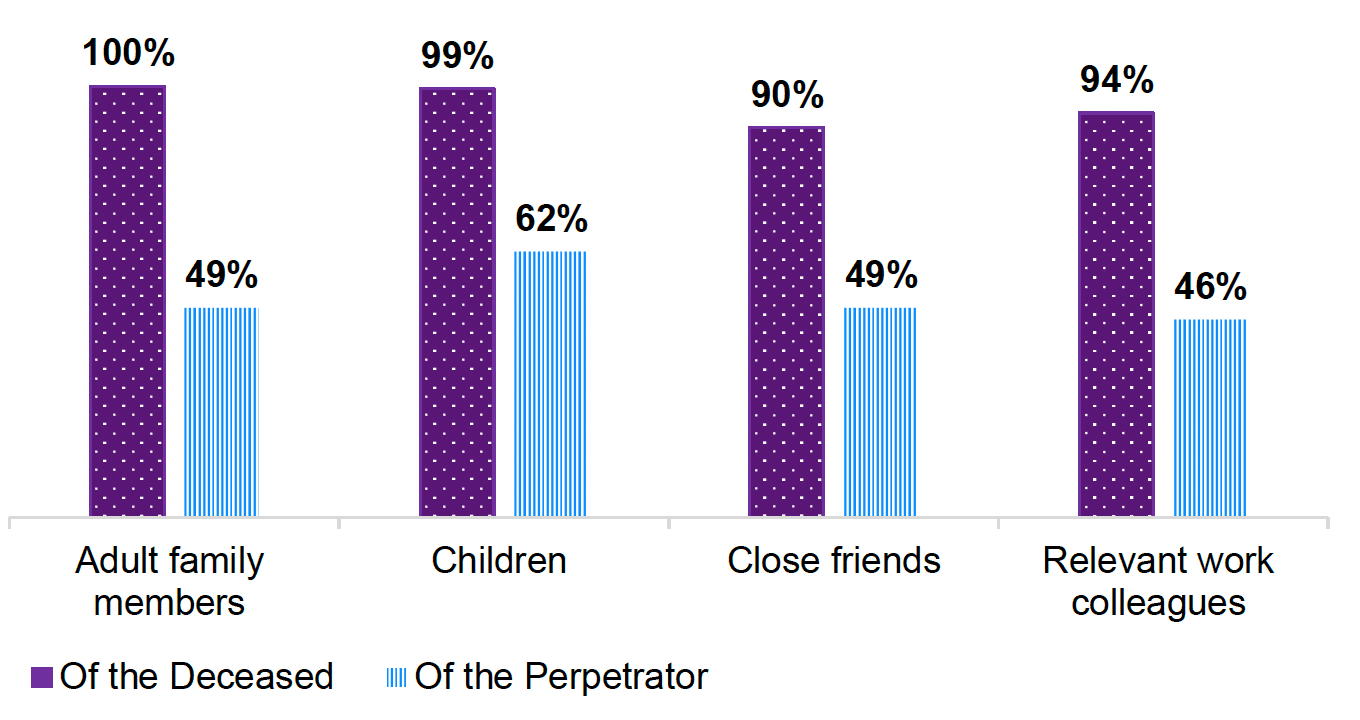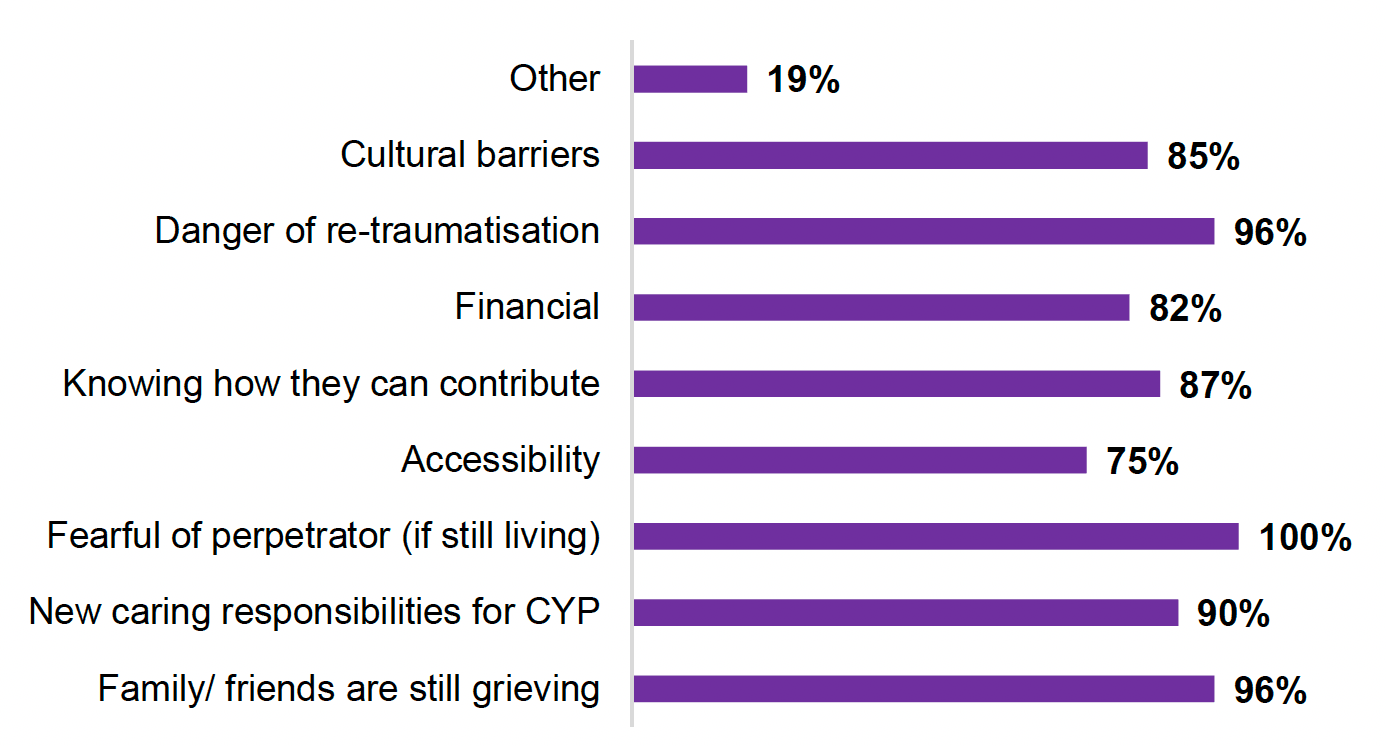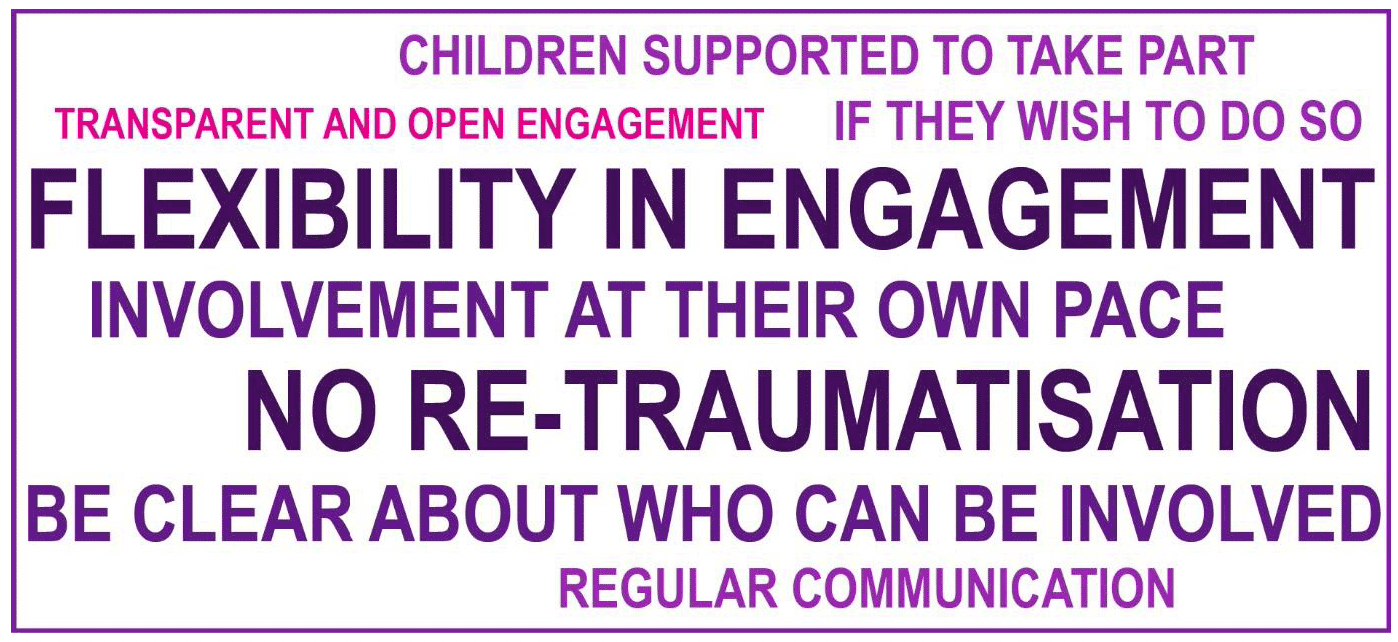Domestic homicide reviews: consultation analysis
We undertook a period of consultation and targeted engagement to inform the development of a Domestic Homicide Review model for Scotland. Those with lived experience of domestic abuse and those working in the field shared their views on fundamental aspects of the model.
B) Families and Friends' Involvement
This section is about how family and friends can be included within the review process. It also asked respondents what support could look like to help family and friends to take part.
The involvement of families and friends can help to ensure the victim’s voice is heard. However, not all families or friends may wish to take part in the process. Some may be concerned about potential re-traumatisation or discovering information they were unaware of.
Any involvement would be a choice for families and friends. How and when people are involved should be sensitively managed with appropriate support available during and following the outcome of the process. An important consideration is whether children and young people (aged under 18) should be involved.
17. Involvement: Which of the following should be given the opportunity to be involved in the Domestic Homicide Review process?
Participants were asked to select who from a list of eight options who should be given the opportunity to be involved in the Domestic Homicide Review process, responders could select one or more options. The results can be seen in Figure (31) below. All categories involving family and friends of the victim achieved a consensus of 90% or above. On the other hand, three of the four categories involving family and friends of the perpetrator achieved consensus levels below 50%, and only involving children of the perpetrator achieved 62% consensus across all respondent types.

It is recognised that contributing to a review may be difficult, stressful, or upsetting for family members and friends. We wanted to understand the potential barriers and make sure that people get the support they need throughout the process.
18. Barriers: Which of the following are considered to be potential barriers to family and friends contributing to the Domestic Homicide Review process? Are there any other barriers which are not listed already?
Participants were asked to consider the potential barriers to family and friends contributing to the Domestic Homicide Review process and their responses can be seen in Figure (32). The barrier that received the highest consensus was being ‘fearful of the perpetrator’, which was unanimously selected as a barrier by all respondents. ‘Still grieving’, ‘danger of re-traumatisation’ and ‘new caring responsibilities for children and young people’ were selected as a barrier by at least 90% of respondents.

Other barriers discussed by respondents stressed the risk to families and friends from the perpetrator (if still living), but also any risk or threats from the perpetrator’s family. Respondents emphasised that giving careful considerations to safety is vital for known and unknown risks, specifically in cases of honour killings, suicides and associates of the perpetrator. The need for accessibility specific to rurality and for those with mental disability or hearing/ sight impairment and dementia was mentioned.
Additionally, those with lived experience expressed that many of the things that they need to do take place while there are work commitments. Having to miss work was stated as a barrier with a huge financial impact for working people. An additional barrier mentioned by respondents was not having an advocate to support and advocate on behalf of/ alongside the families, friends and carers involved.
Respondents also stressed that involving young children needs careful consideration. Some professional respondents shared that fear of the process and mistrust in the system could prevent some from participating in the review.
19. Support: What support should be in place for families and friends through the Domestic Homicide Review process?
Respondents were asked about what support should be in place for families and friends through the domestic homicide review process. Resoundingly across respondent types, two types of support were highlighted which correspond to a trauma-informed advocacy service that provides quality and safe support, and expertly facilitates the link between the formal process and the individual needs of family/ friends.
Support should include counselling services during and after the domestic homicide review takes place, to help families and friends cope and process reliving the trauma and loss. Secondly would be having a dedicated support worker/ advocator during the Domestic Homicide Review process. An effective communications plan and well trained and informed staff to be single points of contact. Safety planning should be offered and measures put in place to protect families and friends involved, especially when the perpetrator or their family/ associates are involved.
Professionals with lived experience stressed that families need to be prioritised during DHRs and courteously facilitated to attend by covering expenses, loss of income, and any other barriers that may arise. A document was shared (for use by the DHR Taskforce) on working with families in reviews from England.
20. Engagement: How should involvement and/ or engagement in the process look like for families and friends
Respondents were asked about how involvement and/or engagement in the Domestic Homicide Review process should look like for families and friends. The most frequent comments that respondents made can be seen in in Figure (33).

Some professional respondents stated that families would be involved with so many services, that the domestic homicide review process may risk losing families if they are approached too early on after bereavement.
Modes of engagement included questionnaires, one-to-one interviews, and statements (both in person and in writing). The provision of safe spaces to participate in at convenient times of the day was also highlighted by professionals and those with lived experience.
Contact
Email: dhrmodel@gov.scot
There is a problem
Thanks for your feedback